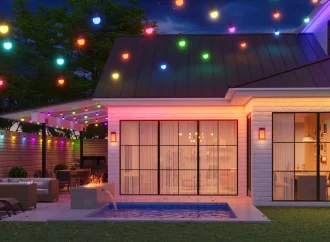In the US, over 80% of all roof damage from hurricanes comes from wind-borne debris. With this in mind, you should be prepared for a hurricane before it hits. If you’re going to be boarding up your windows, you might as well make sure your roof can withstand the storm! Here are 5 things you
In the US, over 80% of all roof damage from hurricanes comes from wind-borne debris. With this in mind, you should be prepared for a hurricane before it hits. If you’re going to be boarding up your windows, you might as well make sure your roof can withstand the storm! Here are 5 things you should do before and during a hurricane to protect your roof.
A storm is a-comin’, and you know it. You can feel it in the air. If you live in an area prone to hurricanes, you’re probably getting ready for the big one stocking up on batteries, water, and canned goods. But what about your home? Are you thinking about your roof? If you don’t inspect your roof before the hurricane hits, you might not get another chance after it does. And if you don’t inspect your roof after the hurricane is over, there could be some nasty surprises waiting for you when the skies clear up and things go back to normal.
Protect Your Roof from Rain with a Rain Gutter System
Rain gutters and downspouts are an important part of any roofing exterior. They serve to protect the foundation and the walls of your home or business from water damage caused by rain and snow runoff. They are designed to get water away from the roof as quickly and efficiently as possible. If your home gets significantly flooded during a storm, instead of repairing or replacing your rain gutters. You can build raised gutters to protect your roofs with screens and metal straps.
After properly base-boarding the exposed metal, you can cover the material with a new layer of treated plywood. Raised gutters and rain gutters aren’t the only solutions to protect your roof damage during a hurricane.
You should also consider installing flashing to increase the safety of your building during a rainstorm. Remote-controlled flashing is an effective way to raise the roof without changing the roof itself. It consists of copper piping with a flexible. This flexible insulator puts water pressure into the concrete when the roof is pulled up.
When the roof is then lowered into place, water will drain away from the interior of the building instead of down toward the eaves. Good gutters provide the most watertight roof installed today into your home. If you already have attic space, consider installing an additional portion of quality flashing to increase the water tightness of the attic space for increased water protection.
Protect Your Roof from Wind-Borne Debris with a Metal Shield
If you’ve noticed damage to your roof after a storm, it’s important to take action quickly.
If you want to give your roof the best care possible, you’ll need to have the right equipment. Before you get started, think about the type of damage your roof has sustained. Is it heavily wood/pontoon-style?
You’ll need a carpenter’s hammer to get access to roofs like that. High wind damage, however, will require a different approach.
The right coat is important. Depending on what kind of damage has occurred, you’ll want a special roofing product to seal or repair the damage. In general, sealants are easier for roofs to service because in most cases, they’re covered by a warranty.
Penetrating asphalt is a great choice to seal the gutter. It may seem expensive at first, but you can get a quantity of it at your local hardware store for less than $15 per gallon. Instead of six coats, you could get only two or three.
This asphalt is a sealant that can withstand hurricane-level winds, but it needs to be cleaned between each application. To prevent the asphalt from sticking to itself and the gutter, keep moving the bottle between each use.
A gutter lock is inexpensive and keeps the asphalt in place. Get one if you have one. If you’re missing a gutter lock, it’ll be difficult to stop any water from leaking into your home.
If there’s water coming through your roof, you’re much more likely to see damage to the gutter and to the outside of the roof if you board up the remaining windows rather than using caulking. Why? Caulking allows water to get underneath the gutter where the shingles meet the roof.
Replace Old Shingles to Prevent Leaks during Storms
A roof is an important part of any property’s structure, and the roof on your home is no different. Your roof protects your home from the elements of nature, so it’s crucial to have it regularly inspected for damage. One of the most common problems with roofs is the shingles themselves. If the roof leaks at any point, the result is roof damage. Your roof should be able to resist a hurricane safely; otherwise, you have to replace it every time it rains.
This means it needs to be made of thick materials that are resistant to being struck by winds of up to 180 mph. Before a hurricane, you can take care of a few things that could damage your roof. Ideally, these would be over-the-top items that would be hard to get to, like trees or leaves.
These will have to go. You should also be thinking about the debris that will fall during the storm. This will include trees, power lines, and other objects that could cause damage if they break free from the ground. If structural damage is a concern, you may want to remove such objects from your roof during a hurricane. If your roof is older and more shingles are showing, replace them as soon as possible.
Unlike newer roofs, old ones may not be reinforced to withstand the forces of a hurricane. However, this is also the time to assess the roof if it’s in a bad state before the storm hits.
In order to assess the state of the roof, you should have the roofs break down the entire length of the roof to find damaged areas.
During a hurricane, you’ll have to choose where to protect your roof. You may want to put up hurricane shutters to prevent weather from entering your home. In some areas, these shutters could be able to achieve a certain level of water tightness, meaning you will only be able to open them reliably during a hurricane.
Watch For Signs of Damage and Repair Them Before It Gets Worse
Before you purchase your new roof, it may be a good idea to inspect your existing roof. Send a tarp or sheeting from your local roofing company to your roof; it may be a good idea to inspect the material used to construct your roof in the past.
Always verify the material has not been compromised by water or chemicals in the area. When shopping for a roofing company, always ask about their life expectancy, their track record for supplying roofs to hurricane-prone areas, and their liability coverage.
Roofing companies might try to pass this responsibility onto you, but it’s better to have it covered on your end by a roofing company that has extensive experience and liability insurance.
Having a roofing company that is unable to offer this coverage is also grounds to question the quality of the service they’re providing. During a search, also be sure to find out if they are protecting your roof with an electrician and a certified electrician in attendance.
Lower Your AC, Vents, and Power Lines to Protect Them from the Storm
It’s never too early to start preparing for a hurricane. The first step is to prepare your home by getting rid of any clutter and making sure you have everything you need in your emergency kit. When the storm hits, there are a few things you can do to protect your air conditioner from being damaged.
Conclusion
While many people are busy making sure they have enough food and water stocked up for the storm, it’s also important to make sure your home roof is ready for the impending hurricane season. Most of the roofing companies in Winston Salem, North Carolina, have introduced a few key tips over the years about how to inspect your roof before and after hurricanes. If you live in an area prone to hurricanes, these tips might save you thousands in repairs after the storm passes through.



















Leave a Comment
Your email address will not be published. Required fields are marked with *